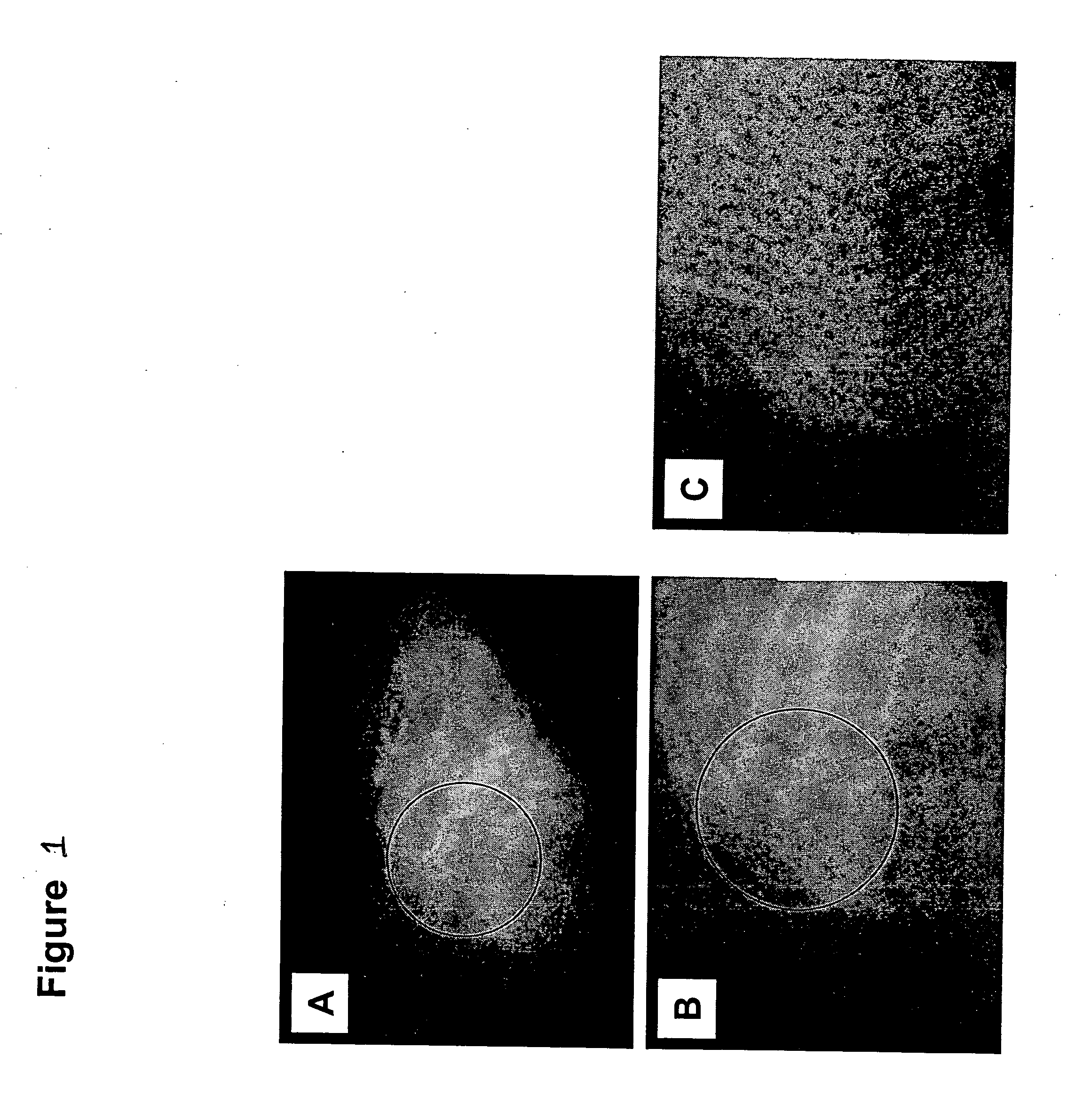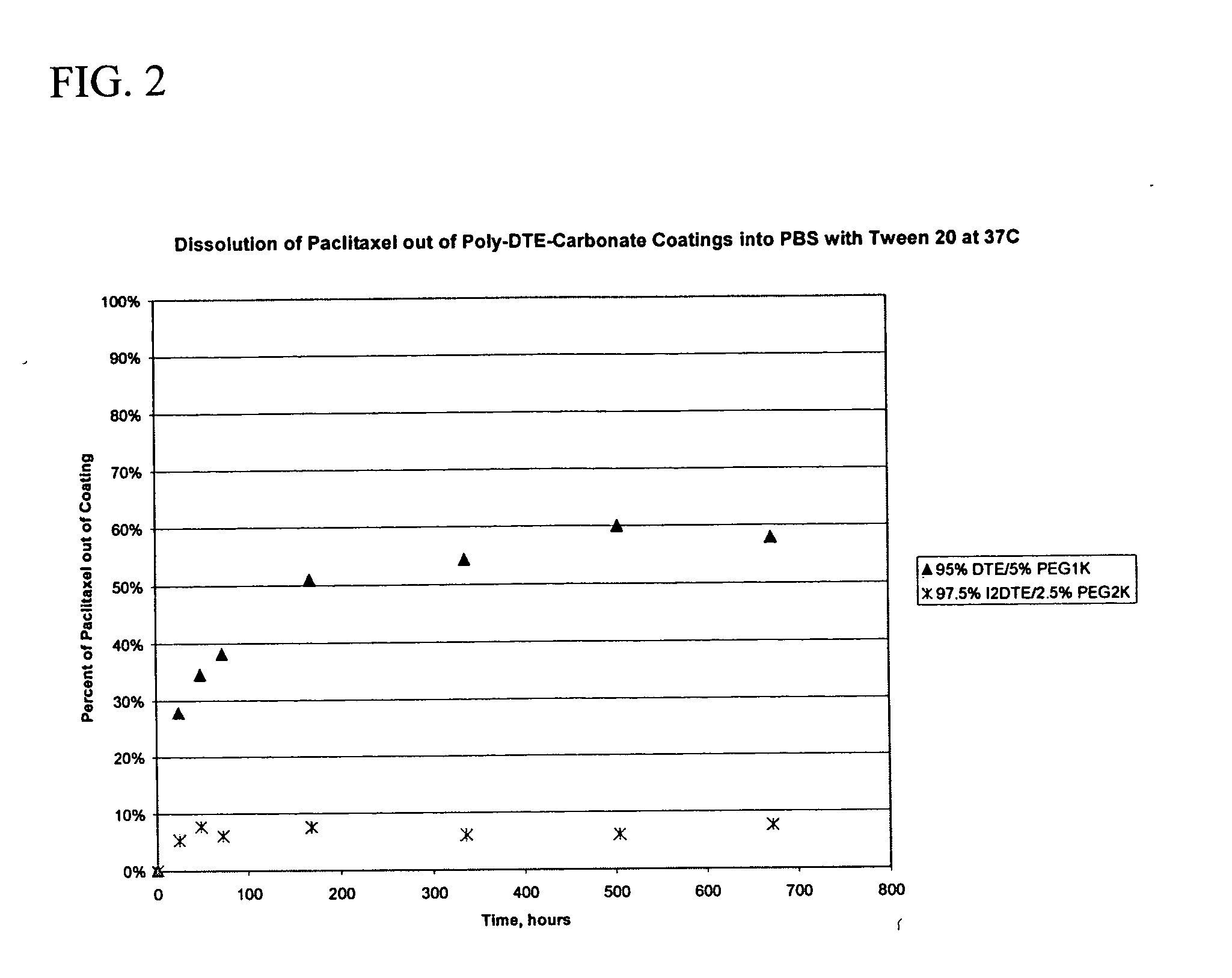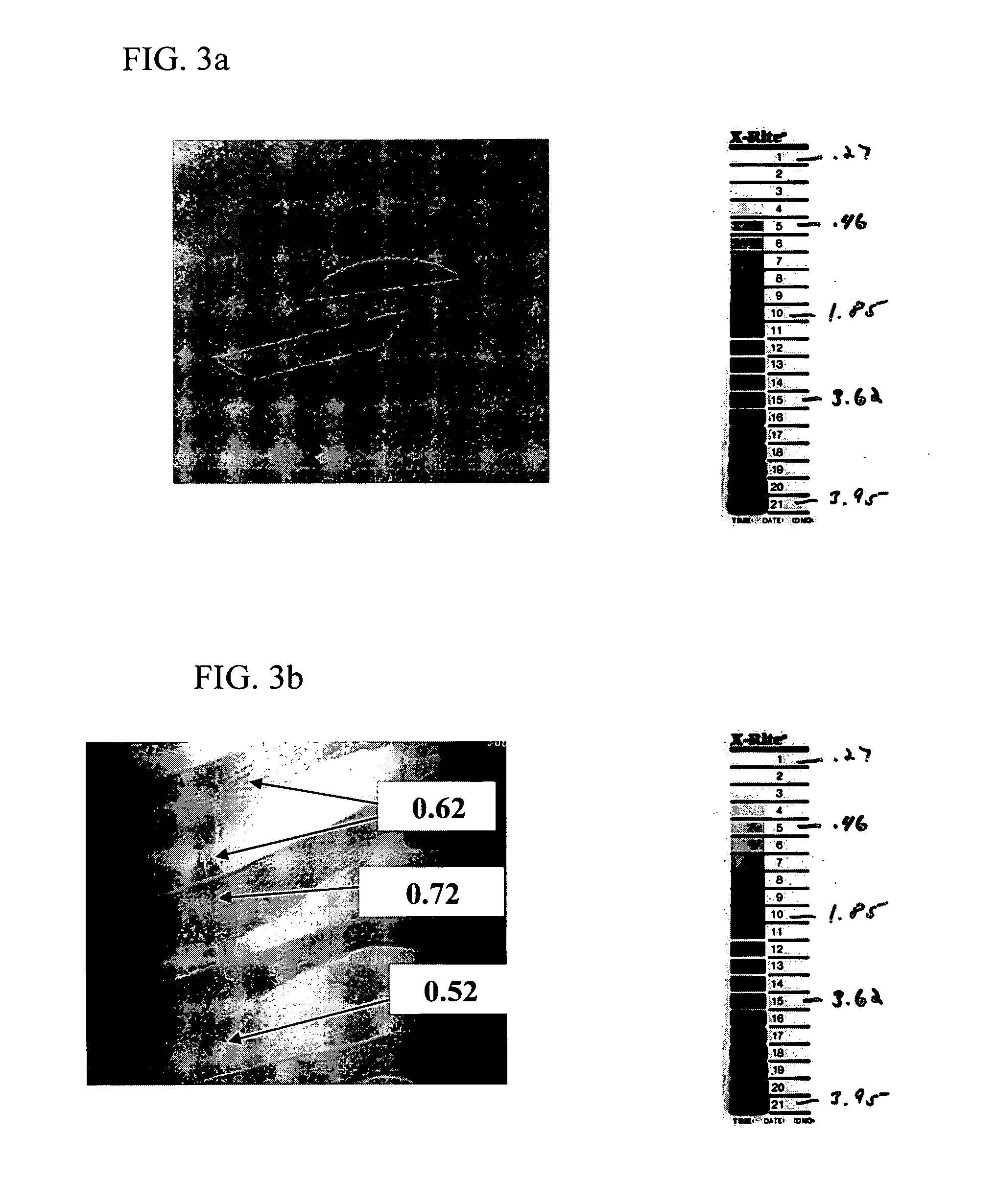Inherently radiopaque polymeric products for embolotherapy
a polymer product and radiopaque technology, applied in drug compositions, cardiovascular disorders, extracellular fluid disorders, etc., can solve the problems of metal embolic coils, chronic tissue damage, permanent incorporation into the tissue, etc., to enhance the local delivery of a therapeutic agent, reduce blood flow, and enhance local delivery. effect of the therapeutic agen
- Summary
- Abstract
- Description
- Claims
- Application Information
AI Technical Summary
Benefits of technology
Problems solved by technology
Method used
Image
Examples
example 1
Preparation of Poly(60% I2DTE-co-20% I2DT-co-20% PEG2K Carbonate)
[0230] Into a three necked round-bottomed flask, equipped with a mechanical stirrer, a thermometer, a reflux condenser and a rubber septum were added 18.3 g (0.03 mol) of I2DTE, 6.38 g (0.01 mol) of I2DTtBu, 20 g (0.01 mol) of PEG2000, and 300 ml of methylene chloride. On stirring a clear light yellow solution was obtained. To this was added 15.1 ml (0.15 mol) of pyridine. In a gas tight plastic syringe was placed 30 ml of a 20% solution of phosgene in toluene (0.0576 mol), which was added to the reaction flask over 3 h using a syringe pump. The molecular weight was determined by analyzing an aliquot of the reaction mixture by GPC. Additional phosgene solution (up to 10%) was needed to achieve desired molecular weight. The reaction mixture was quenched with 110 ml of THF and 10 ml of water. The polymer was precipitated by adding the reaction mixture to 1.5 L of cold 2-propanol in high speed Waring blender.
[0231] The ...
example 2
Preparation of Poly(I2DTE-co-2.5 mole % PEG2K Carbonate)
[0233] A polymer containing 97.5% mole percent I2DTE and 2.5% poly(ethylene glycol) of molecular weight 2000 (poly(97.5% I2DTE-co-2.5% PEG2K carbonate)) was prepared as follows. Into a three necked round-bottomed flask, equipped with a mechanical stirrer, a thermometer, a reflux condenser and a rubber septum, were added 29.7 g (0.0488 mol) of I2DTE, 2.5 g (0.00125 mol) of PEG2000, and 215 ml of methylene chloride. On stirring a clear light yellow solution was obtained. To this was added 15.1 ml (0.15 mol) of pyridine. In a gas tight plastic syringe was placed 30 ml of a 20% solution of phosgene in toluene (0.0576 mol), which was added to the reaction flask over 3 h using a syringe pump. The molecular weight was determined by analyzing an aliquot of the reaction mixture by GPC. Additional phosgene solution (up to 10%) was added to achieve the desired molecular weight. The reaction mixture was quenched with 110 ml of tetrahydrof...
example 3
Formation of Embolotherapy Particles
[0234] A 5% w / w DMSO solution of the polymer of Example 2 was prepared by dissolving 0.650 g polymer in 12.35 g DMSO. A precipitation solution was prepared by adding 3 ml of a 10 vol % aqueous solution (from concentrate) of ALCONOX surfactant to 300 ml water. The precipitation solution was placed in a 600 ml container and stirred on a slow setting (<100 RPM). Adding the DMSO polymer solution to the precipitation solution in a drop-wise fashion from a syringe through a 26-gauge needle allows for polymer spheres to precipitate. The 26-gauge needle was ground to a point to buff off the silicone coating. This reduces surface tension, resulting in smaller drops of polymer when dispensed.
[0235] The precipitated polymer spheres were isolated through a filtered drop funnel and allowed to air dry. The spheres were then cryogenically ground in a coffee grinder at about 20,000 RPM with added CO2. The ground particles were then dried overnight in a vacuum o...
PUM
| Property | Measurement | Unit |
|---|---|---|
| weight fraction | aaaaa | aaaaa |
| wt % | aaaaa | aaaaa |
| weight fraction | aaaaa | aaaaa |
Abstract
Description
Claims
Application Information
 Login to View More
Login to View More - R&D
- Intellectual Property
- Life Sciences
- Materials
- Tech Scout
- Unparalleled Data Quality
- Higher Quality Content
- 60% Fewer Hallucinations
Browse by: Latest US Patents, China's latest patents, Technical Efficacy Thesaurus, Application Domain, Technology Topic, Popular Technical Reports.
© 2025 PatSnap. All rights reserved.Legal|Privacy policy|Modern Slavery Act Transparency Statement|Sitemap|About US| Contact US: help@patsnap.com



